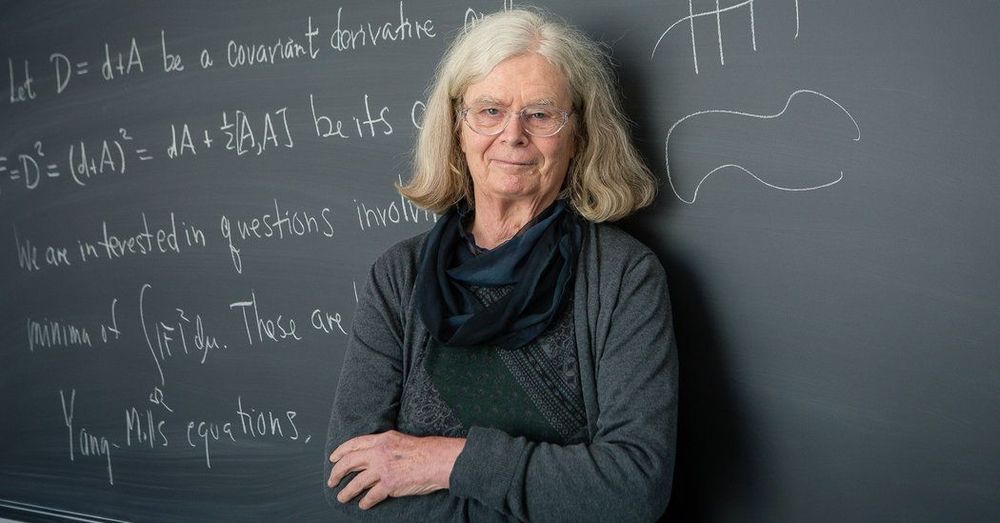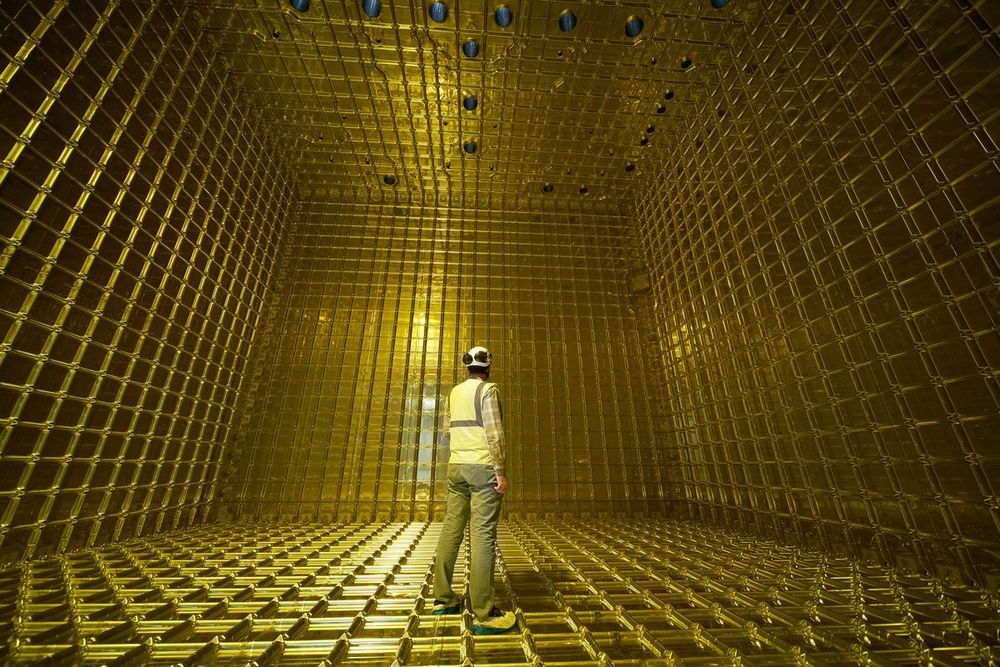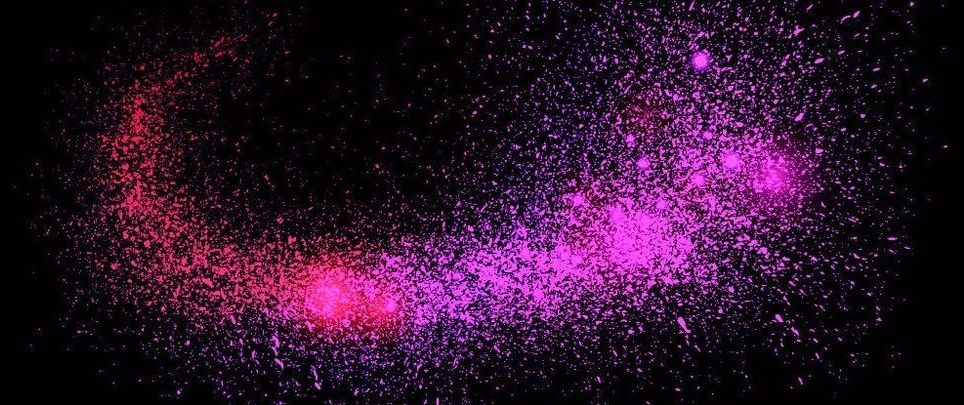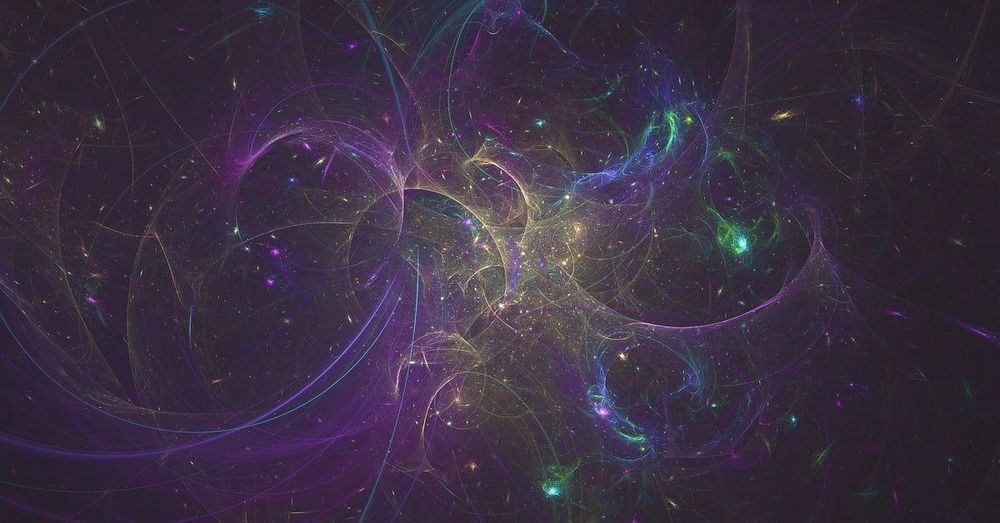Archive for the ‘particle physics’ category: Page 462
Mar 19, 2019
Karen Uhlenbeck Is First Woman to Win Abel Prize for Mathematics
Posted by Genevieve Klien in categories: mathematics, particle physics, quantum physics
For the first time, one of the top prizes in mathematics has been given to a woman.
On Tuesday, the Norwegian Academy of Science and Letters announced it has awarded this year’s Abel Prize — an award modeled on the Nobel Prizes — to Karen Uhlenbeck, an emeritus professor at the University of Texas at Austin. The award cites “the fundamental impact of her work on analysis, geometry and mathematical physics.”
One of Dr. Uhlenbeck’s advances in essence described the complex shapes of soap films not in a bubble bath but in abstract, high-dimensional curved spaces. In later work, she helped put a rigorous mathematical underpinning to techniques widely used by physicists in quantum field theory to describe fundamental interactions between particles and forces.
Continue reading “Karen Uhlenbeck Is First Woman to Win Abel Prize for Mathematics” »
Mar 17, 2019
Pentagon Wants to Test A Space-Based Weapon in 2023
Posted by Klaus Baldauf in categories: existential risks, military, particle physics, satellites
Defense officials have asked for $304 million to fund research into space-based lasers, particle beams, and other new forms of missile defense next year.
Defense officials want to test a neutral particle-beam in orbit in fiscal 2023 as part of a ramped-up effort to explore various types of space-based weaponry. They’ve asked for $304 million in the 2020 budget to develop such beams, more powerful lasers, and other new tech for next-generation missile defense. Such weapons are needed, they say, to counter new missiles from China, Russia, North Korea and Iran. But just figuring out what might work is a difficult technical challenge.
So the Pentagon is undertaking two studies. The first is a $15 million exploration of whether satellites outfitted with lasers might be able to disable enemy missiles coming off the launch pad. Defense officials have said previously that these lasers would need to be in the megawatt class. They expect to finish the study within six months.
Continue reading “Pentagon Wants to Test A Space-Based Weapon in 2023” »
Mar 15, 2019
Indian Scientists Measure 1.3-Billion-Volt Thunderstorm, the Strongest on Record
Posted by Genevieve Klien in categories: climatology, particle physics, space
Scientists in India observed the highest-voltage thunderstorm ever documented with the help of a subatomic particle you might not hear much about: the muon.
The researchers operate the GRAPES-3 telescope, which measures muons, particles that are similar to electrons but heavier. Specifically, the Gamma Ray Astronomy at PeV EnergieS Phase-3 (GRAPES-3) muon telescope measures high-energy particles from outer space called cosmic rays. It typically picks up 2.5 million muons each minute, mapped on a 13-by-13 grid across the sky. But during thunderstorms, it experiences quick changes to the amount of muons it receives. The GRAPES-3 researchers added electric field monitors to the experiment, and devised a way to turn these muon fluctuations into measurements of the voltage of passing storms.
Mar 14, 2019
Why Fermilab is Making A Neutrino Detector 800 Miles Long
Posted by Quinn Sena in category: particle physics
Mar 12, 2019
New Quantum Physics Experiment Suggests That Reality Isn’t Objective
Posted by Mary Jain in categories: particle physics, quantum physics
A new quantum physics experiment just lent evidence to a mind-boggling idea that was previously limited to the realm of theory, according to the MIT Technology Review — that under the right conditions, two people can observe the same event, see two different things happen, and both be correct.
According to research shared to the preprint server arXiv on Tuesday, physicists from Heriot-Watt University demonstrated for the first time how two people can experience different realities by recreating a classic quantum physics thought experiment.
The experiment involves two people observing a single photon, the smallest quantifiable unit of light that can act as either a particle or a wave under different conditions.
Continue reading “New Quantum Physics Experiment Suggests That Reality Isn’t Objective” »
Mar 12, 2019
The Physics Still Hiding in the Higgs Boson
Posted by Quinn Sena in categories: cosmology, particle physics, quantum physics
But no other new particles have materialized at the LHC, leaving open many mysteries about the universe that the Standard Model doesn’t address. A debate has ensued over whether to build an even more enormous successor to the LHC — a proposed machine 100 kilometers in circumference, possibly in Switzerland or China — to continue the search for new physics.
Physicists say there’s much we can still learn from the Higgs boson itself. What’s known is that the particle’s existence confirms a 55-year-old theory about the origin of mass in the universe. Its discovery won the 2013 Nobel Prize for Peter Higgs and François Englert, two of six theorists who proposed this mass-generating mechanism in the 1960s. The mechanism involves a field permeating all of space. The Higgs particle is a ripple, or quantum fluctuation, in this Higgs field. Because quantum mechanics tangles up the particles and fields of nature, the presence of the Higgs field spills over into other quantum fields; it’s this coupling that gives their associated particles mass.
But physicists understand little about the omnipresent Higgs field, or the fateful moment in the early universe when it suddenly shifted from having zero value everywhere (or in other words, not existing) into its current, uniformly valued state. That shift, or “symmetry-breaking” event, instantly rendered quarks, electrons and many other fundamental particles massive, which led them to form atoms and all the other structures seen in the cosmos.
Continue reading “The Physics Still Hiding in the Higgs Boson” »
Mar 11, 2019
Researchers turn liquid metal into a plasma
Posted by Caycee Dee Neely in categories: nuclear energy, particle physics, security
Scientists at the University of Rochester’s Laboratory for Laser Energetics have achieved a plasma research first. They were able to convert the liquid metal deuterium to the plasma state and directly observe the interaction threshold.
For the first time, researchers at the University of Rochester’s Laboratory for Laser Energetics (LLE) have found a way to turn a liquid metal into a plasma and to observe the temperature where a liquid under high-density conditions crosses over to a plasma state. Their observations, published in Physical Review Letters, have implications for better understanding stars and planets and could aid in the realization of controlled nuclear fusion — a promising alternative energy source whose realization has eluded scientists for decades. The research is supported by the US Department of Energy and the National Nuclear Security Administration.
What is a Plasma?
Plasmas consist of a hot soup of free moving electrons and ions — atoms that have lost their electrons — that easily conducts electricity. Although plasmas are not common naturally on Earth, they comprise most of the matter in the observable universe, such as the surface of the sun. Scientists are able to generate artificial plasmas here on Earth, typically by heating a gas to thousands of degrees Fahrenheit, which strips the atoms of their electrons. On a smaller scale, this is the same process that allows plasma TVs and neon signs to “glow”: electricity excites the atoms of a neon gas, causing neon to enter a plasma state and emit photons of light.
Mar 11, 2019
Ultrathin and ultrafast: Scientists pioneer new technique for two-dimensional material analysis
Posted by Quinn Sena in categories: materials, particle physics
Discovery allows scientists to look at how 2-D materials move with ultrafast precision.
Using a never-before-seen technique, scientists have found a new way to use some of the world’s most powerful X-rays to uncover how atoms move in a single atomic sheet at ultrafast speeds.
The study, led by researchers at the U.S. Department of Energy’s (DOE) Argonne National Laboratory and in collaboration with other institutions, including the University of Washington and DOE’s SLAC National Accelerator Laboratory, developed a new technique called ultrafast surface X-ray scattering. This technique revealed the changing structure of an atomically thin two-dimensional crystal after it was excited with an optical laser pulse.
Mar 9, 2019
CERN Creates Antimatter to Answer Fundamental Question of Universe
Posted by Genevieve Klien in categories: cosmology, nuclear energy, particle physics
The concept of antimatter has delighted sci-fi fans for years, but it also poses a real question for physicists. Mathematically speaking, it makes sense that for every type of particle in our universe there exists a corresponding antiparticle which is the same but with the opposite charge — so to correspond with the electron, for example, there should be an antielectron, also known as a positron. When antimatter and matter come into contact, they both destroy each other in a flash of energy.
When the Big Bang happened, it should have created equal amounts of both matter and antimatter. And yet matter is everywhere and there is hardly any antimatter in our universe today. Why is that?
A new experiment from CERN, the European Organization for Nuclear Research, has been tackling the question by looking at how matter and antimatter could react differently to Earth’s gravitational field. Physicists think that antimatter could fall at a different rate than matter, which would help to explain why it is less prevalent. But in order to test this, they need to create antimatter particles such as positronium atoms. These are pairs of one electron and one positron, but they only live for a fraction of a second — 142 nanoseconds to be exact — so there isn’t enough time to perform experiments on them.
Continue reading “CERN Creates Antimatter to Answer Fundamental Question of Universe” »

















